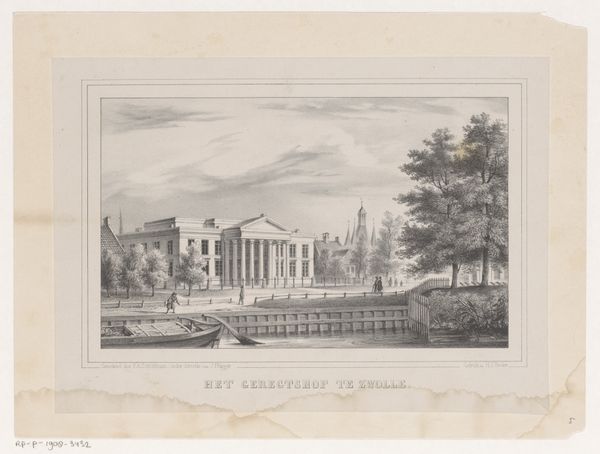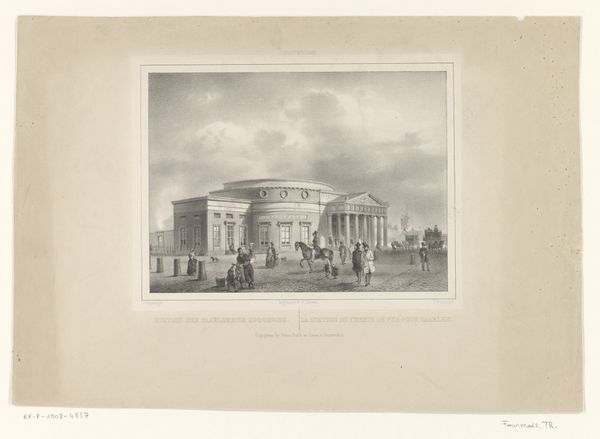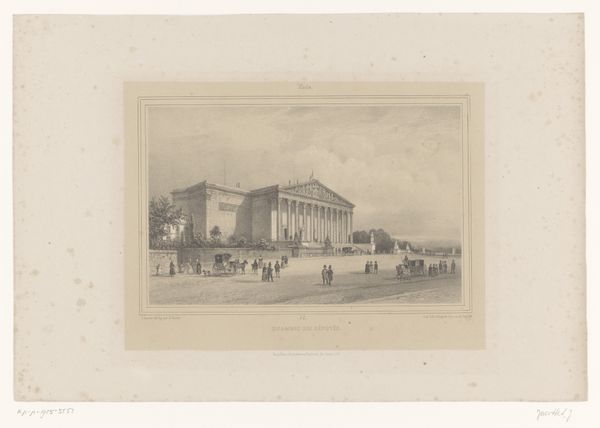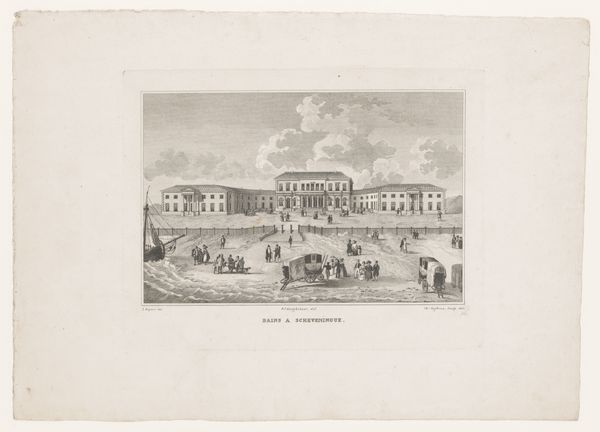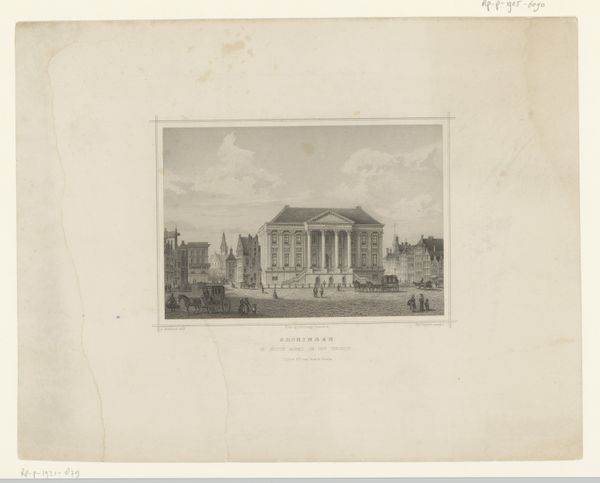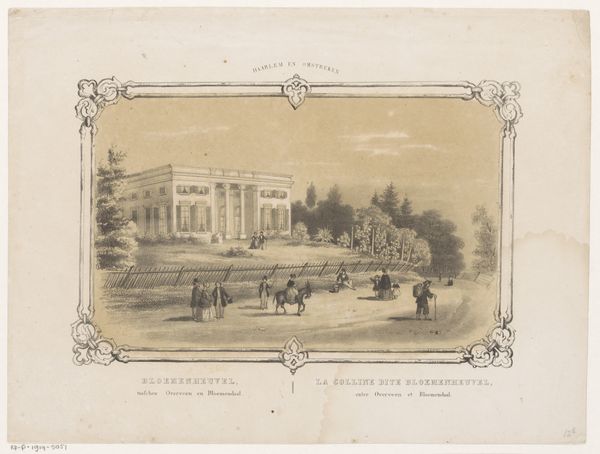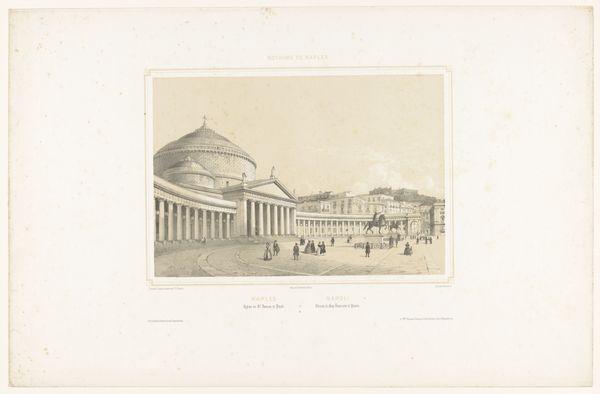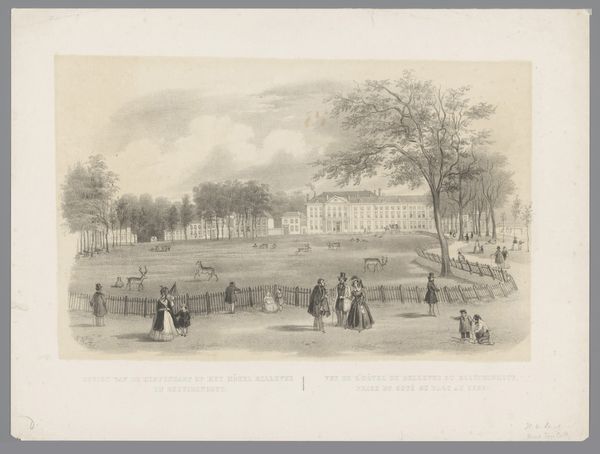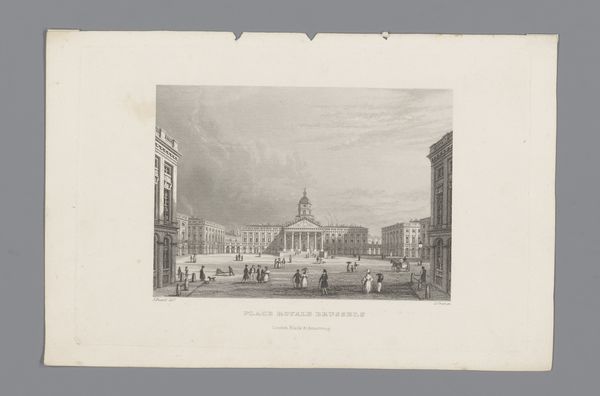
Gezicht op het Girard College in Philadephia 1817 - 1882
0:00
0:00
johanngabrielfriedrichpoppel
Rijksmuseum
print, engraving
#
neoclacissism
# print
#
landscape
#
cityscape
#
academic-art
#
engraving
Dimensions: height 167 mm, width 246 mm
Copyright: Rijks Museum: Open Domain
Johann Gabriel Friedrich Poppel created this print of the Girard College in Philadelphia using etching and engraving techniques. These processes involve using acid to cut lines into a metal plate, which is then inked and pressed onto paper to create an image. Consider the way the material of the print—paper and ink—interact. The fineness of the etched lines allows for a remarkable level of detail, capturing the architectural grandeur of the college and the bustling activity of its surroundings. Look closely at the textures Poppel has created, from the smooth surfaces of the buildings to the varied patterns of clothing on the figures. This would have required a significant amount of labor. Prints like this were often produced in multiples, making images more accessible to a wider audience than unique works of art. By understanding the materials and processes behind this print, we can appreciate its role in disseminating images and ideas in the 19th century. It challenges traditional notions of artistic value, inviting us to consider the social and cultural significance of mass-produced imagery.
Comments
No comments
Be the first to comment and join the conversation on the ultimate creative platform.



